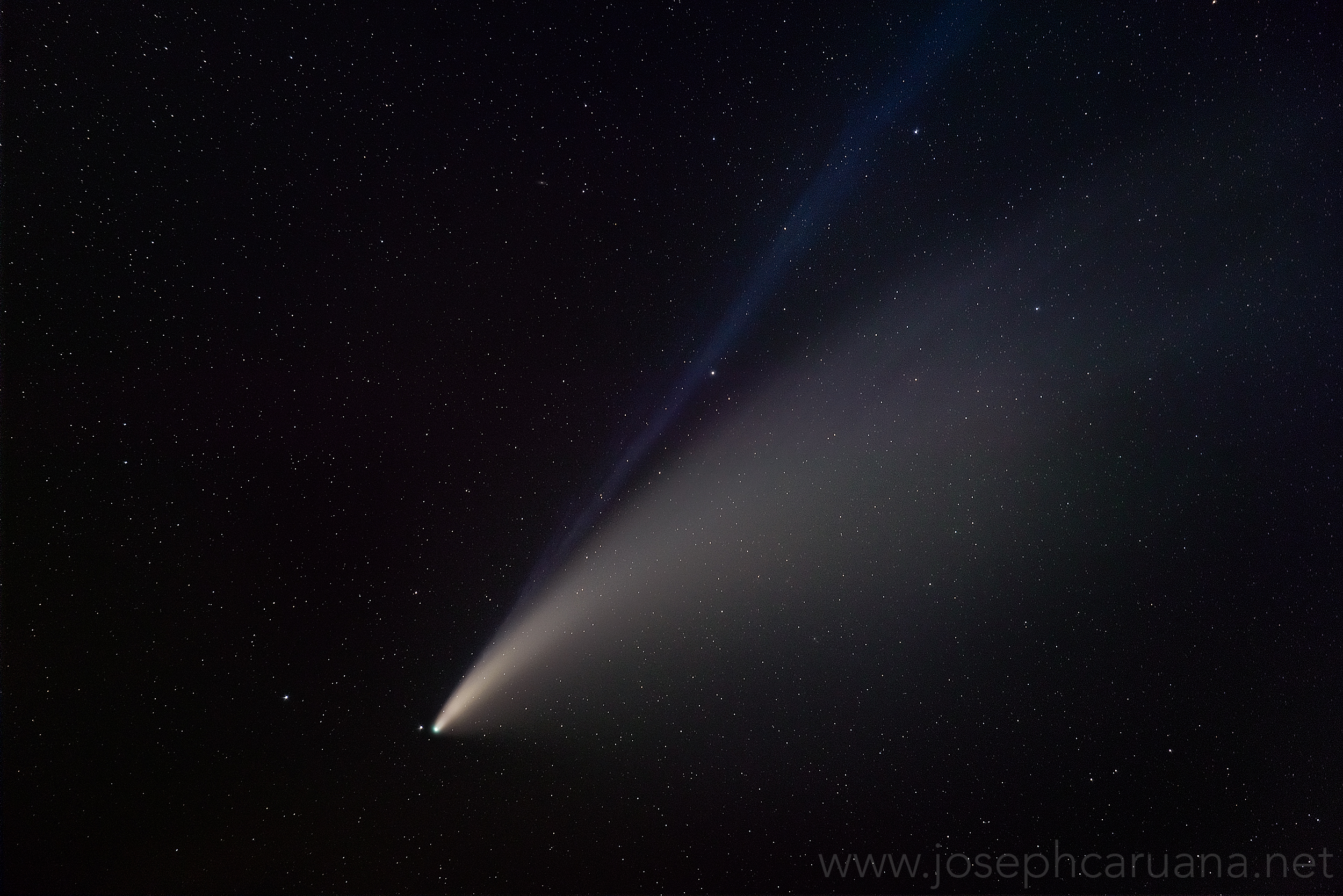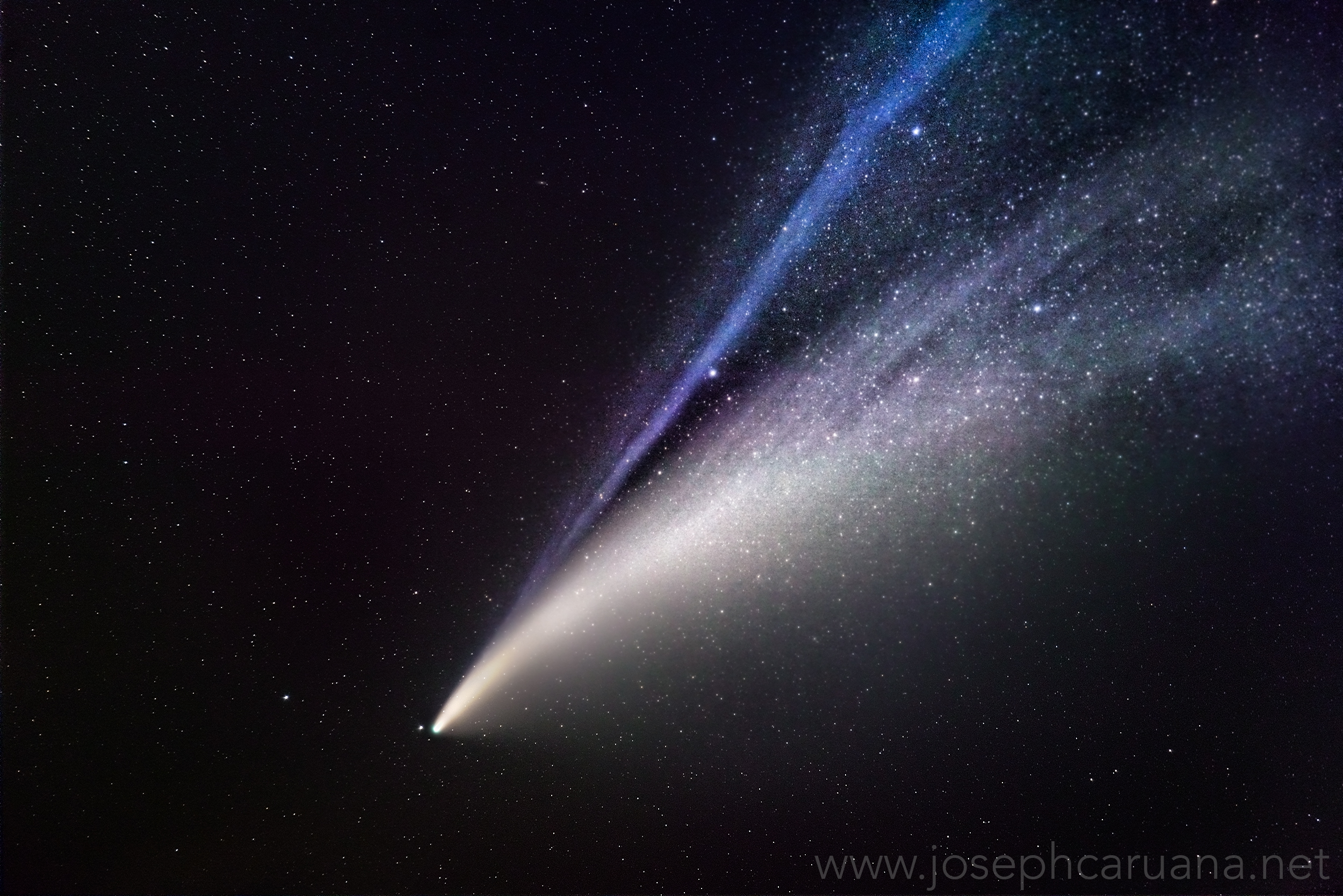A tale of two tails
Yesterday night, Comet NEOWISE was a fabulous sight at Dwejra! With the unaided eye I could make out a stunning, 5-degree tail! As soon as I acquired the first image, both tails leapt out with discernible colour. From then on, it was a rush to acquire as much data as I could in between cloudy moments.
Dust streaming from the comet reflects sunlight, thus appearing as a yellow-white dust tail. The thin, blue tail, on the other hand, is known as the ion tail. It is the result of ultraviolet radiation (from the sun) kicking off electrons from the gasses that are present around the comet’s nucleus, in the so-called coma. Unlike the dust tail, which only reflects light, the ion tail actually fluoresces (i.e. it glows in and of itself).
If you haven’t had a look yet, do make sure to try and catch a glimpse of this marvellous object before it fades back into the depths of space!

Below is a reprocessed version of the data intended to enhance fine structure detail. Ideally, the combined exposure time would have been longer. However, the combination of decreasing altitude (as the night progressed) and intermittent clouds meant that I had to stop short of acquiring more data frames. That being said, while the reprocessed image is a bit noisier, it does help to bring out the synchronic bands in the dust tail. These are alternating, parallel bright and dark zones in the tail – the result of different regions having different densities.

